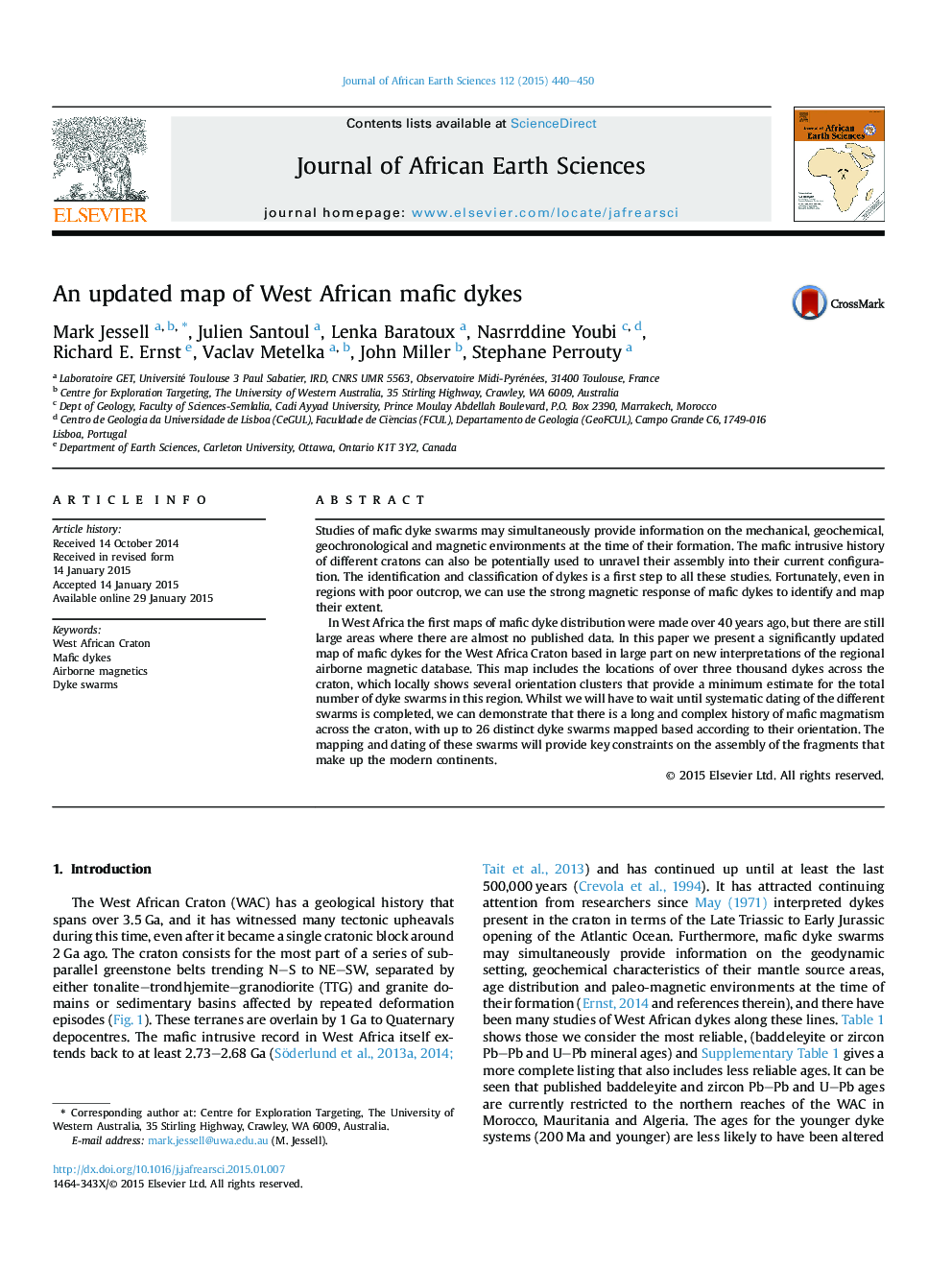| Article ID | Journal | Published Year | Pages | File Type |
|---|---|---|---|---|
| 4728553 | Journal of African Earth Sciences | 2015 | 11 Pages |
•We have produced a new map of mafic dykes across the West African Craton.•This map reveals up to 26 possibly distinct mafic dyke swarms.•This map underpins future studies of their age, geochemistry and paleomagnetism.•There is an unexplained zone poor in mafic dykes centred on Côte d’Ivoire.
Studies of mafic dyke swarms may simultaneously provide information on the mechanical, geochemical, geochronological and magnetic environments at the time of their formation. The mafic intrusive history of different cratons can also be potentially used to unravel their assembly into their current configuration. The identification and classification of dykes is a first step to all these studies. Fortunately, even in regions with poor outcrop, we can use the strong magnetic response of mafic dykes to identify and map their extent.In West Africa the first maps of mafic dyke distribution were made over 40 years ago, but there are still large areas where there are almost no published data. In this paper we present a significantly updated map of mafic dykes for the West Africa Craton based in large part on new interpretations of the regional airborne magnetic database. This map includes the locations of over three thousand dykes across the craton, which locally shows several orientation clusters that provide a minimum estimate for the total number of dyke swarms in this region. Whilst we will have to wait until systematic dating of the different swarms is completed, we can demonstrate that there is a long and complex history of mafic magmatism across the craton, with up to 26 distinct dyke swarms mapped based according to their orientation. The mapping and dating of these swarms will provide key constraints on the assembly of the fragments that make up the modern continents.
Graphical abstractNew map of mafic dykes across the West African Craton, based on interpretation of aeromagnetic data, field studies and previous work.Figure optionsDownload full-size imageDownload as PowerPoint slide
